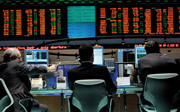The Brazil Stock Exchange defends its fees as the regulator considers a reform to bring costs down, reports Nick Fitzpatrick.
After Brazil became the “B” in Brics, its São Paulo-based stock market operator – BM&F Bovespa – soaked up inflows from foreign investors and became one of the top ten largest exchanges in the world.
Despite a dip in market capitalisation last year as talk surfaced that Brazilian equities might be overheating, foreign investors came back again this year pushing trading volumes and revenues for the exchange – though not the value of the main index – to record levels in the first quarter (see pages 14-15).
The exchange, which is also a market place for derivatives, saw record group revenues in the first quarter and then again in the second quarter (Q2). Explaining this in its Q2 2012 statement, the exchange said higher foreign investor activity had partly underpinned the pattern.
Its equity section increased revenues, while swings in interest rates helped its derivatives section grow too.
Yet over Q2, the exchange’s own share price fell 8.8%. Critics have argued that the exchange’s fees are too high, and so now, after enjoying a period where it has had a monopoly status, BM&F Bovespa is facing the prospect of competition as foreign providers also eye those lucrative trading volumes.
A report published in June and commissioned by CVM, the securities and exchange commission of Brazil, sought to see what the effect of extra competition would be on the trading and post-trading structure in Brazil. The report found that transaction costs could fall by between 2.3% and 8.1%.
Penned by British consulting firm Oxera, the report found that BM&F Bovespa trading and post-trading service fees were high compared to international peers – in fact, 13 to 27 times higher than the New York Stock Exchange and twice as high as the Australian Stock Exchange.
But the BM&F Bovespa defended its fees. A spokesman tells Funds Global: “Despite the misleading perception, [the] all-in cost in [the exchange] is competitive compared to other markets. Comparing only the trading fees among exchanges is misleading. [The exchange] provides higher portion of services than the peers.”
Alice Botis, head of Latin America business development at technology vendor Fidessa, notes that the exchange is attempting to encourage high-frequency traders with competitive pricing.
“The exchange has taken steps to create a pricing programme that is conducive to high-frequency traders. These traders will get a discount if they use high-frequency trading, which is something the exchange wants to encourage.”
In its second quarter results, BM&FBovespa posted growth of 35.7% year-on-year for high-frequency trading revenues within its Bovespa segment.
A merger of the Brazilian Mercantile & Futures Exchange (Bolsa de Mercadorias e Futuros) and São Paulo Stock Exchange (Bolsa de Valores de São Paulo) in 2008 created the BM&F Bovespa.
The growth in high-frequency trading revenues in both Bovespa and BM&F is connected to a strategy to diversify the operator’s revenues. The strategy also involves the promotion of exchange-traded funds.
The spokesman added that further product diversification includes Tesouro Direto – a platform for retail investors to trade in government bonds through the internet – and securities lending Another area that saw growth in Q2 was the exchange’s data vending business. Foreign investors helped give a 6.6% year-on-year boost to revenues from data sales thanks partly to a depreciation of the Brazilian real against the dollar, the currency that foreign investors use to pay for exchange data.
MARKET SHARE
But while the exchange diversifies and grows its revenues, what of the foreign competition that it faces in this decade if the regulator presses ahead with a structural reform?
One estimate, sourced to HSBC by Bloomberg, says the operator could lose 30% of its market share.
Ahead of any real competition, BM&F Bovespa has already taken measures to broaden its trading base. It has a memorandum of understanding with the Shanghai Stock Exchange that could pave the way for cross-listings (the spokesman mentioned cross-listing derivatives with other Brics nations – that is, Russia and India). Also, the Brazil exchange recently entered into a deal with Chi-X Global, a trading venue, to allow foreign investors to trade Brazilian shares in their local currencies.
However, its best link-up to date is with the Chicago Mercantile Exchange, which allows both exchanges to trade each other’s derivatives, with equities to follow this year.
©2012 funds global





